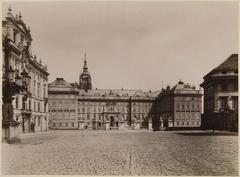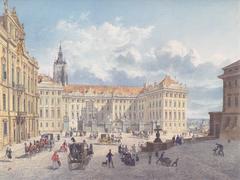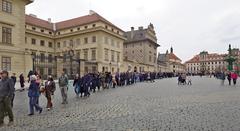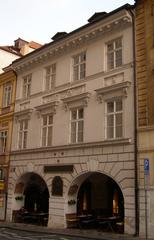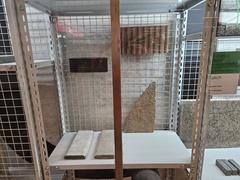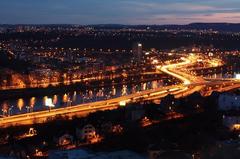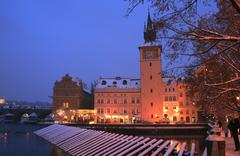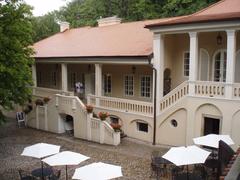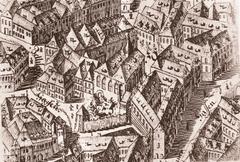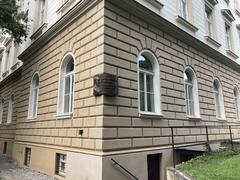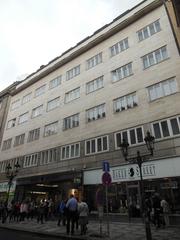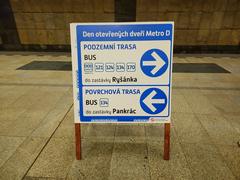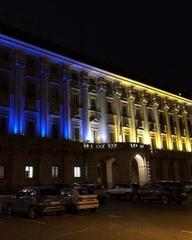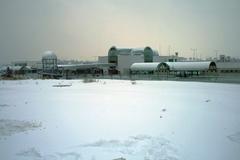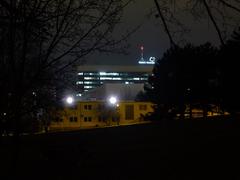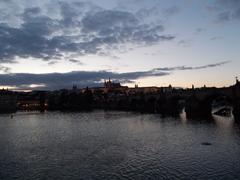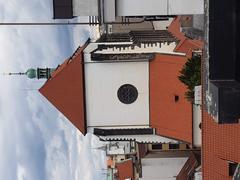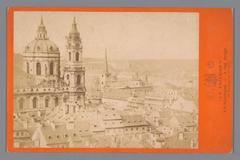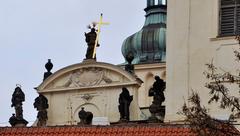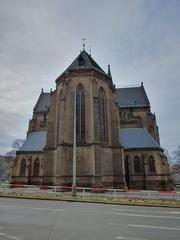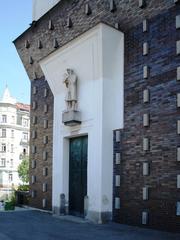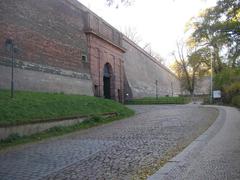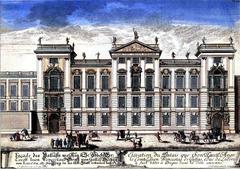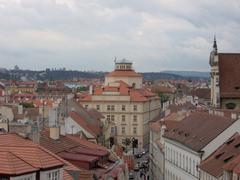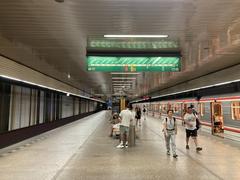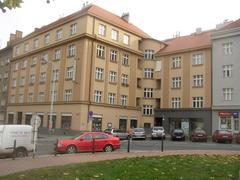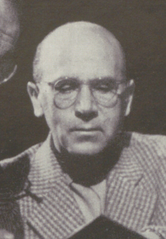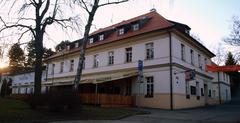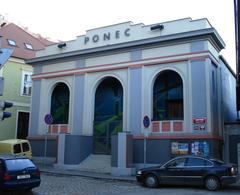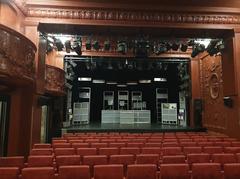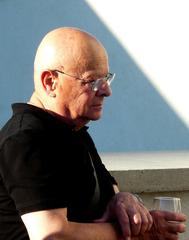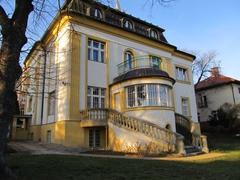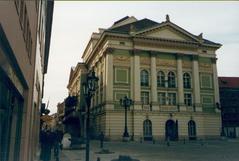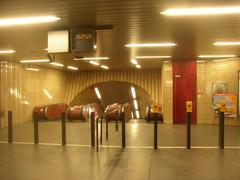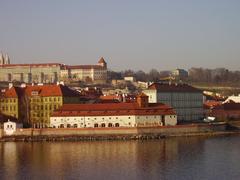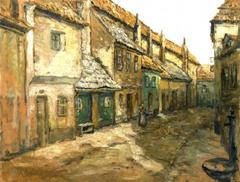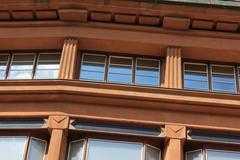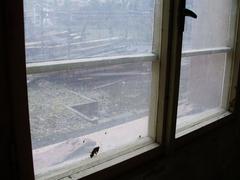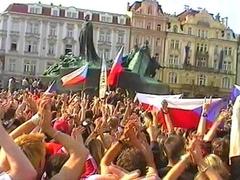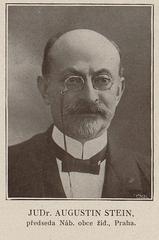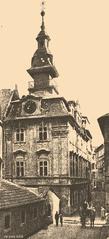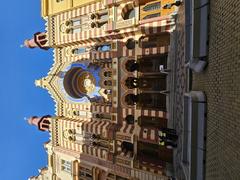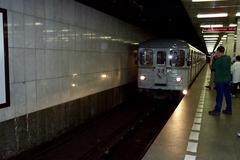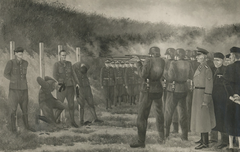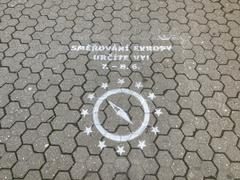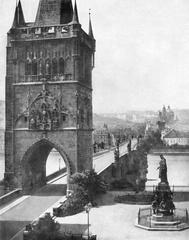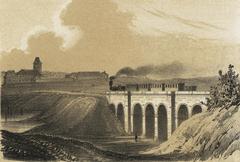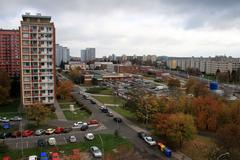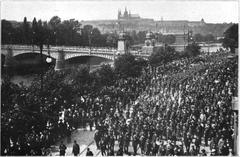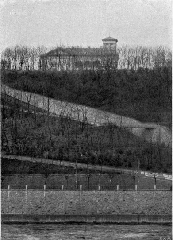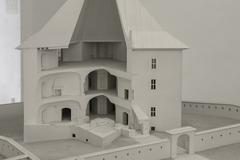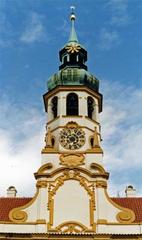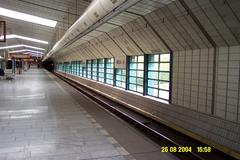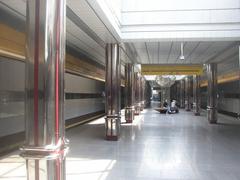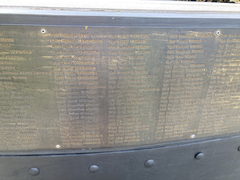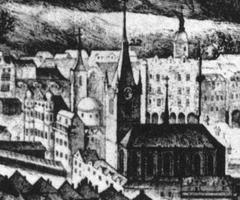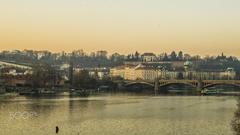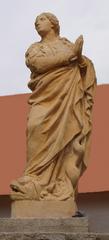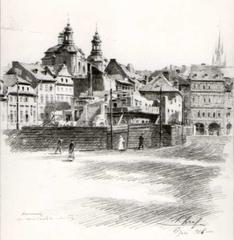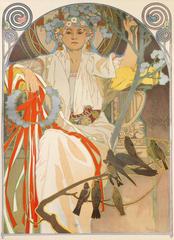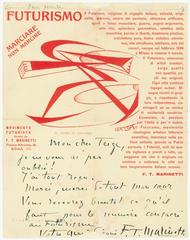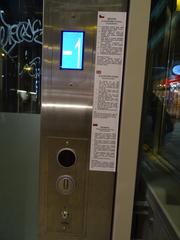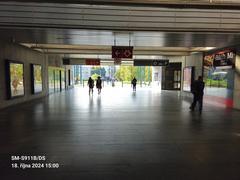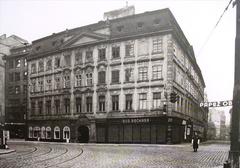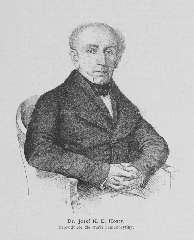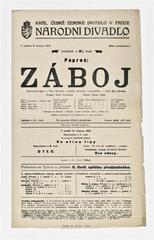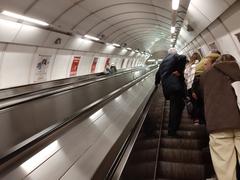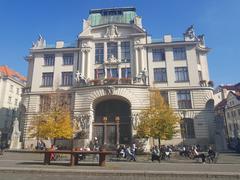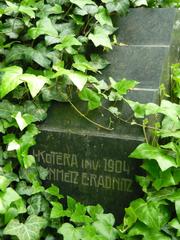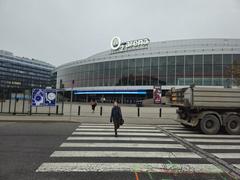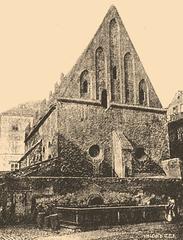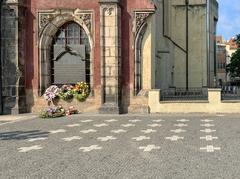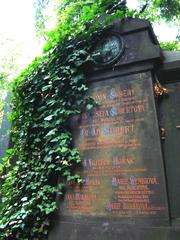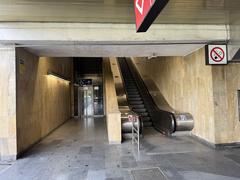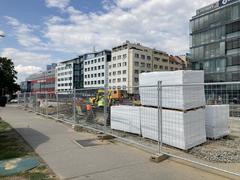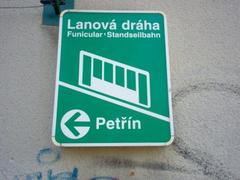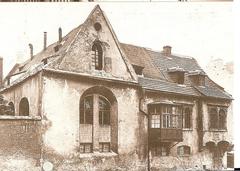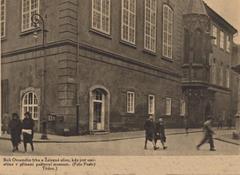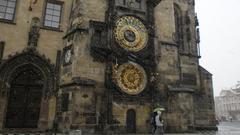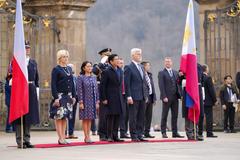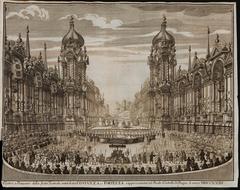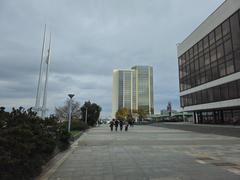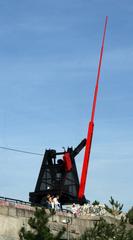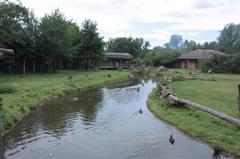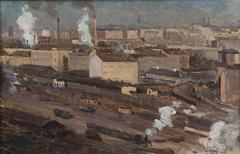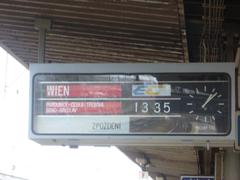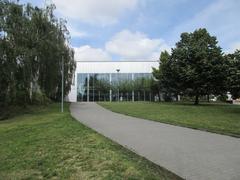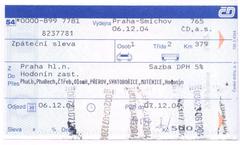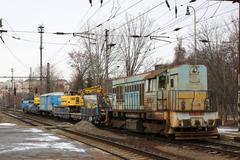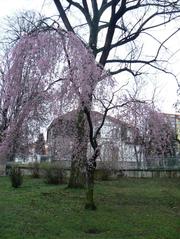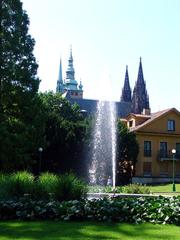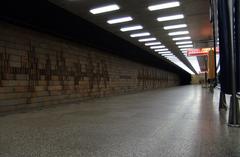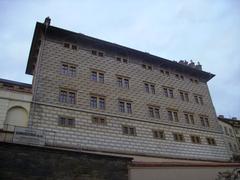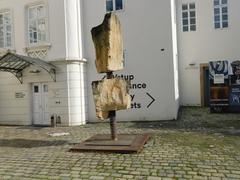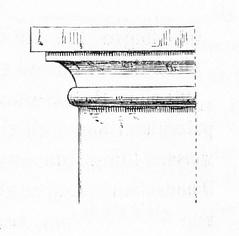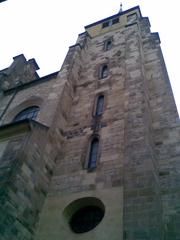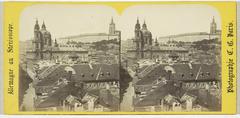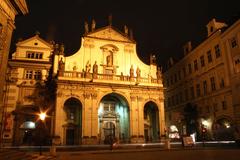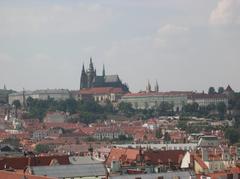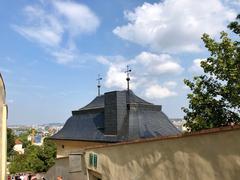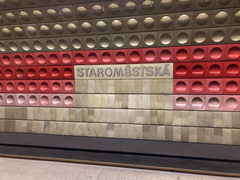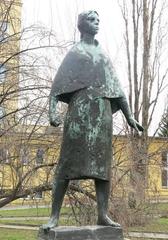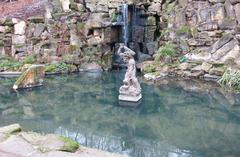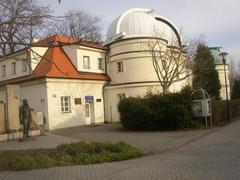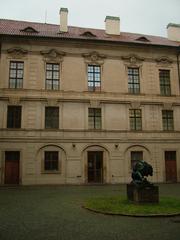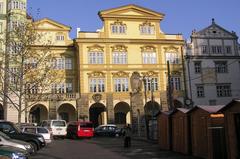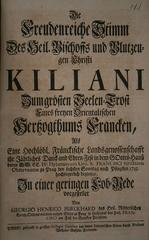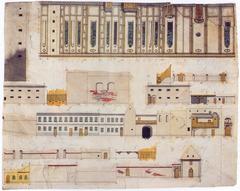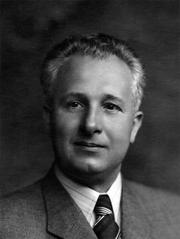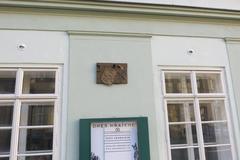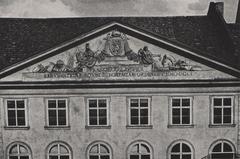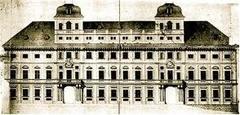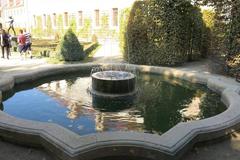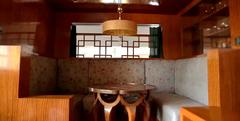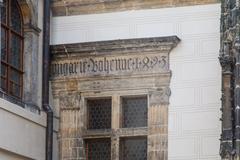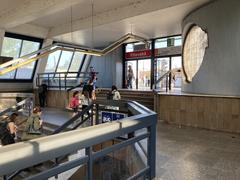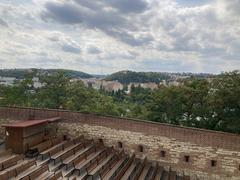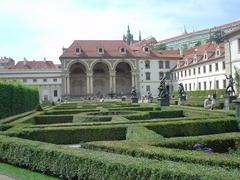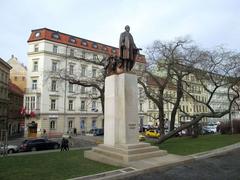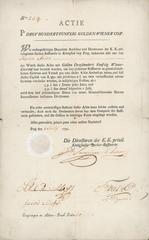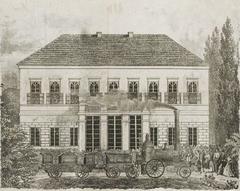
Hradčany Square Visiting Hours, Tickets, and Historical Sites in Prague
Date: 18/07/2024
Introduction
Hradčany Square, or Hradčanské náměstí, is a cornerstone of Prague’s rich historical and cultural tapestry. Nestled in the Hradčany district, the square dates back to the 9th century and has been a central point for the city’s political, religious, and social life. Overlooking the square is the iconic Prague Castle, one of the largest ancient castles in the world, which has served as the seat of Czech kings, emperors, and presidents for over a millennium. The square is a showcase of architectural evolution, featuring Renaissance, Baroque, and Gothic styles, embodied in landmarks such as the Schwarzenberg Palace, the Archbishop’s Palace, and St. Vitus Cathedral. Today, Hradčany Square is not only a historical gem but also a vibrant cultural hub, attracting visitors from around the globe. This guide provides a comprehensive overview of Hradčany Square’s history, notable landmarks, visitor information, and travel tips to help you make the most of your visit to this iconic Prague destination. For more detailed information on the visiting hours and tickets for specific attractions, you can check the official Prague Castle website.
Table of Contents
- [History of Hradčany Square](#history-of-hradčany-squarehistory-of-hradčany-square)
- [Origins and Early Development](#origins-and-early-developmentorigins-and-early-development)
- [Medieval Period](#medieval-periodmedieval-period)
- [Renaissance and Baroque Influence](#renaissance-and-baroque-influencerenaissance-and-baroque-influence)
- [Habsburg Era and Modernization](#habsburg-era-and-modernizationhabsburg-era-and-modernization)
- [20th Century and Beyond](#20th-century-and-beyond20th-century-and-beyond)
- [Notable Buildings and Monuments](#notable-buildings-and-monumentsnotable-buildings-and-monuments)
- [Prague Castle](#prague-castleprague-castle)
- [St. Vitus Cathedral](#st-vitus-cathedralst-vitus-cathedral)
- [Schwarzenberg Palace](#schwarzenberg-palaceschwarzenberg-palace)
- [Archbishop’s Palace](#archbishops-palacearchbishops-palace)
- [Sternberg Palace](#sternberg-palacesternberg-palace)
- [Tuscan Palace](#tuscan-palacetuscan-palace)
- [Visitor Information](#visitor-informationvisitor-information)
- [Visiting Hours](#visiting-hoursvisiting-hours)
- [Tickets](#ticketstickets)
- [Travel Tips](#travel-tipstravel-tips)
- [Best Time to Visit](#best-time-to-visitbest-time-to-visit)
- [Public Transport](#public-transportpublic-transport)
- [Nearby Attractions](#nearby-attractionsnearby-attractions)
- [Charles Bridge](#charles-bridgecharles-bridge)
- [Old Town Square](#old-town-squareold-town-square)
- [Cultural Significance](#cultural-significancecultural-significance)
- [Preservation and Tourism](#preservation-and-tourismpreservation-and-tourism)
- [FAQ](#faqfaq)
- [Conclusion](#conclusionconclusion)
- [References](#referencesreferences)
History of Hradčany Square
Origins and Early Development
Hradčany Square, known as Hradčanské náměstí in Czech, is a historic and culturally significant area located in the Hradčany district of Prague. The square’s origins date back to the 9th century when the Prague Castle was established. The castle, which overlooks the square, was initially a wooden fortress built by Prince Bořivoj of the Přemyslid dynasty. Over the centuries, the castle and its surrounding areas, including Hradčany Square, evolved into a complex of palaces, churches, and other significant buildings.
Medieval Period
During the medieval period, Hradčany Square became a focal point for the nobility and clergy. The square was part of the larger Hradčany district, which was officially recognized as a town in 1320 by King John of Bohemia. This period saw the construction of several important buildings, including the Old Royal Palace and St. Vitus Cathedral. The square served as a gathering place for various events, including markets, public announcements, and religious ceremonies.
Renaissance and Baroque Influence
The Renaissance and Baroque periods brought significant architectural and cultural changes to Hradčany Square. In the 16th century, the square witnessed the construction of the Schwarzenberg Palace, a prime example of Renaissance architecture. The palace, with its distinctive sgraffito decorations, remains one of the most striking buildings on the square.
The 17th century saw the addition of the Archbishop’s Palace, a Baroque masterpiece that became the residence of the Archbishop of Prague. The palace’s ornate façade and grand interiors reflect the opulence of the Baroque era. Another notable Baroque structure is the Sternberg Palace, which now houses part of the National Gallery’s collection.
Habsburg Era and Modernization
The Habsburg era brought further development and modernization to Hradčany Square. The 18th and 19th centuries saw the construction of several new buildings and the renovation of existing ones. The square became a symbol of Habsburg power and influence in the region. One of the most significant additions during this period was the Tuscan Palace, built in the early 18th century. The palace, with its grandiose design, served as the residence of the Tuscan branch of the Habsburg family.
20th Century and Beyond
The 20th century was a period of significant political and social change for Hradčany Square. Following the collapse of the Austro-Hungarian Empire in 1918, Czechoslovakia was established, and Prague became its capital. Hradčany Square continued to be a central location for political and cultural events. During World War II, the square and its surrounding buildings suffered damage, but extensive restoration efforts in the post-war period helped preserve its historical and architectural heritage.
In the latter half of the 20th century, Hradčany Square became a popular tourist destination, attracting visitors from around the world. The square’s historical significance and architectural beauty make it a must-visit location for anyone exploring Prague.
Notable Buildings and Monuments
Hradčany Square is home to several notable buildings and monuments that reflect its rich history.
Prague Castle
Overlooking the square, the castle is a symbol of Czech history and culture. It has been the seat of Czech kings, emperors, and presidents for over a thousand years. (Prague Castle)
St. Vitus Cathedral
This Gothic masterpiece is one of the most important religious buildings in the Czech Republic. It houses the tombs of several Bohemian kings and Holy Roman Emperors. (St. Vitus Cathedral)
Schwarzenberg Palace
A stunning example of Renaissance architecture, the palace now serves as a museum showcasing Baroque art. (Schwarzenberg Palace)
Archbishop’s Palace
This Baroque palace has been the residence of the Archbishop of Prague since the 17th century. (Archbishop’s Palace)
Sternberg Palace
Home to part of the National Gallery’s collection, the palace features works by European masters from the 14th to the 18th centuries. (Sternberg Palace)
Tuscan Palace
Built in the early 18th century, this palace is a fine example of Baroque architecture and served as the residence of the Tuscan branch of the Habsburg family. (Tuscan Palace)
Visitor Information
Visiting Hours
Hradčany Square is open to the public 24/7, but specific buildings like Prague Castle and St. Vitus Cathedral have their own visiting hours. Check the official website for detailed timings.
Tickets
Entry to the square is free, but tickets are required for certain attractions like Prague Castle and St. Vitus Cathedral. Prices and tickets can be found here.
Travel Tips
Best Time to Visit
Early mornings or late afternoons are ideal to avoid crowds.
Public Transport
Accessible via tram and metro, with the nearest stop being Malostranská.
Nearby Attractions
Charles Bridge
A historic bridge that connects the Old Town with Lesser Town.
Old Town Square
Known for its historic buildings and the Astronomical Clock.
Cultural Significance
Hradčany Square is not only a historical and architectural gem but also a cultural hub. The square hosts various events throughout the year, including concerts, festivals, and public celebrations. Its proximity to Prague Castle makes it a popular spot for tourists and locals alike.
The square’s rich history and cultural significance are reflected in its architecture and the stories of the people who have lived and worked there over the centuries. From medieval kings to modern-day tourists, Hradčany Square has been a witness to the evolving history of Prague and the Czech Republic.
Preservation and Tourism
Efforts to preserve the historical and architectural integrity of Hradčany Square have been ongoing for decades. Restoration projects have ensured that the square and its buildings remain in excellent condition, allowing future generations to appreciate their beauty and significance.
Tourism plays a crucial role in the square’s preservation. The influx of visitors provides the necessary funds for maintenance and restoration projects. Guided tours, informational plaques, and interactive exhibits help educate visitors about the square’s history and importance.
FAQ
- Is Hradčany Square wheelchair accessible?
- Yes, the square is generally accessible, but some historic buildings may have limited accessibility.
- Are guided tours available?
- Yes, guided tours are available and can be booked through various tour operators or the official website.
Conclusion
Hradčany Square stands as a testament to the rich and diverse history of Prague. From its origins in the 9th century to its role as a focal point for nobility, clergy, and political figures, the square has been a witness to many pivotal moments in Czech history. Its architectural marvels, including the Schwarzenberg Palace, the Archbishop’s Palace, and St. Vitus Cathedral, offer a glimpse into the artistic and cultural trends that have shaped Prague over the centuries. Today, Hradčany Square continues to be a vibrant cultural hub, attracting tourists and locals alike with its historical significance and stunning architecture. Whether you’re exploring the National Gallery’s collection, attending a cultural event, or simply taking in the panoramic views of Prague Castle, Hradčany Square promises a memorable experience. Preservation efforts and tourism play a crucial role in maintaining the square’s historical integrity, ensuring that future generations can continue to appreciate its beauty and significance. For more details on visiting hours, ticket prices, and guided tours, you can visit the official websites of the attractions.
References
- Exploring Hradčany Square - History, Visiting Hours, and Tips, 2024, Anonymous source
- Hradčany Square - Visiting Hours, Tickets, and Historical Significance in Prague, 2024, Anonymous source
- Discover Hradčany Square - Visiting Hours, Tickets, and Must-See Attractions in Prague, 2024, Anonymous source

